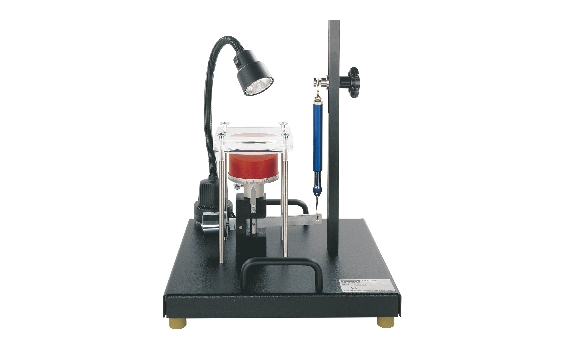TM 262 Hertzian pressure

When two bodies with a convex surface are pressed against each other, ideally, these bodies only come into contact linearly or at one or more points. In the real world, as the two bodies approach each other, an elliptical contact area occurs at the contact point due to deformation. In this case, the compressive stresses (compression) are proportionally distributed to the deformations.
Heinrich Hertz, a physicist, developed a theory to calculate the largest pressure, also known as Hertzian pressure. The size and shape of the contact areas and the extent and distribution of the mechanical stresses under the contact areas can also be calculated.
The TM 262 experimental unit demonstrates the shape of the occurring contact area under Hertzian pressure as an example. A rubber pressure pad is pressed against a transparent plastic plate via a lever. The plate and pressure pad are curved. Both circular and elliptical contact areas can be generated.
Using a spring balance, the force is measured at the lever and the contact force is determined. A halogen lamp at one side perfectly illuminates the contact area. Grid lines on the plastic plate make it easier to measure the contact area.
- demonstration of the contact area under Hertzian pressure
- generation of circular or elliptical contact areas
- especially clear results due to pairing transparent plastic with silicone rubber
Spring balance
- 0…25N
- graduation: 0,5N
Pressure pad
- 60 Shore
Halogen lamp
- voltage: 12V
- power: 20W
230V, 50Hz, 1 phase
230V, 60Hz, 1 phase; 120V, 60Hz, 1 phase
UL/CSA optional
- demonstration of Hertzian pressure
- silicone rubber pressure pad
- transparent plastic plate with grid lines makes it
easier to measure the contact area - spring scale to measure force
- movable device for the spring balance to generate a continuously
adjustable contact force - optimum illumination of the contact area by side-mounted halogen lamp
- resulting shape of the contact area under point contact with different radii of curvature
- shape of the contact area as a function of the contact force
- influence of an additional transverse component of the contact force
